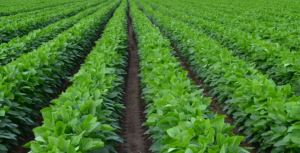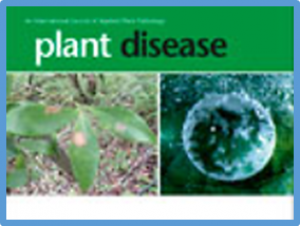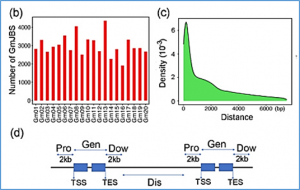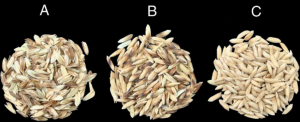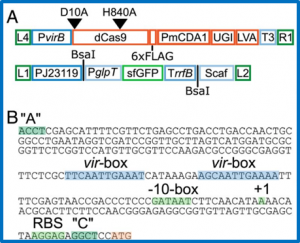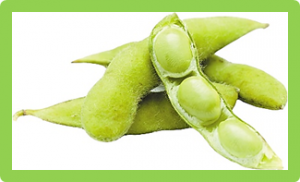Soybean is one of the greatest crops in the world, with about 348.7 million tons being produced in 2018. Soybean hull is a by-product produced during the processing of soybean to obtain flour and oil. Though not being actually exploited, it is a source of polyphenols with antioxidant activity. Here, the extraction of polyphenols from soybean hull was performed by means of an alkaline hydrolysis treatment, which was optimized by the response surface methodology. At the optimal region, a total phenolic content of 0.72 g gallic acid equivalents per 100 g of soybean hull was obtained with an antioxidant activity of 2.17 mmoles of Trolox equivalents.
Soybean cyst nematode (Heterodera glycines, SCN) is the most harmful pathogen of soybean (Glycine max (L.) Merr.) worldwide. In 2016, a new soybean-parasitic cyst nematode, Heterodera sojae (the white soybean cyst nematode) was found parasitizing the roots of soybean plants in Korea. To investigate the distribution and population density of H. sojae, 943 soil samples were collected from soybean fields in all nine provinces in Korea in 2017 to 2018
ChIP-seq is widely used for mapping the transcription factor (TF) binding sites throughout the genome in vivo. In this study, we adopted and modified ChIPmentation, a fast, robust, low-input requirement ChIP-seq method, to a transient expression system using soybean protoplasts to expedite the exploration of TF binding sites.
Cereal crop production is severely affected by seed-borne bacterial diseases across the world. Locally occurring disease resistance in various crops remains elusive. Here, we have observed that rice plants of the same cultivar can be differentiated into disease-resistant and susceptible phenotypes under the same pathogen pressure. Following the identification of a seed-endophytic bacterium as the resistance-conferring agent
In many eukaryotic systems during immune responses, mitogen-activated protein kinases (MAPKs) link cytoplasmic signaling to chromatin events by targeting transcription factors, chromatin remodeling complexes, and the RNA polymerase machinery. So far, knowledge on these events is scarce in plants and no attempts have been made to focus on phosphorylation events of chromatin-associated proteins.
Bananas (Musa spp.) are an important fruit crop worldwide. The fungus Fusarium oxysporum f. sp. cubense (Foc), which causes Fusarium wilt, is widely regarded as one of the most damaging plant diseases. Fusarium wilt has previously devastated global banana production and continues to do so today. In addition, due to the current use of high-density banana plantations, desirable banana varieties with ideal plant architecture (IPA) possess high lodging resistance
Agrobacterium spp. are important plant pathogens that are the causative agents of crown gall or hairy root disease. Their unique infection strategy depends on the delivery of part of their DNA to plant cells. Thanks to this capacity, these phytopathogens became a powerful and indispensable tool for plant genetic engineering and agricultural biotechnology. Although Agrobacterium spp. are standard tools for plant molecular biologists
Globally, soybean is a major protein and oil crop. Enhancing our understanding of the soybean domestication and improvement process helps boost genomics-assisted breeding efforts. Here we present a genome-wide variation map of 10.6 million single-nucleotide polymorphisms and 1.4 million indels for 781 soybean individuals which includes 418 domesticated (Glycine max), 345 wild (Glycine soja), and 18 natural hybrid (G. max/G. soja) accessions. We describe the enhanced detection of 183 domestication-selective sweeps and the patterns of putative deleterious mutations during domestication and improvement.
Rice has been grown as a staple food in South Korea for several millennia. However, its status has not stayed constant as a result of changes in South Korean culture and government policies. Nevertheless, the preference of South Korean consumers for japonica rice has remained consistent over the known history of the country.
Rice blast, caused by Pyricularia oryzae, is one of the most damaging fungal diseases affecting rice. Understanding how the pathogen's race structure varies over time supports the efforts of rice breeders to develop improved cultivars. Here, the race structure of P. oryzae in Guangdong province, China, where rice is cropped twice per year, was assessed over 18 seasons from 1999 through 2008


 Curently online :
Curently online :
 Total visitors :
Total visitors :
